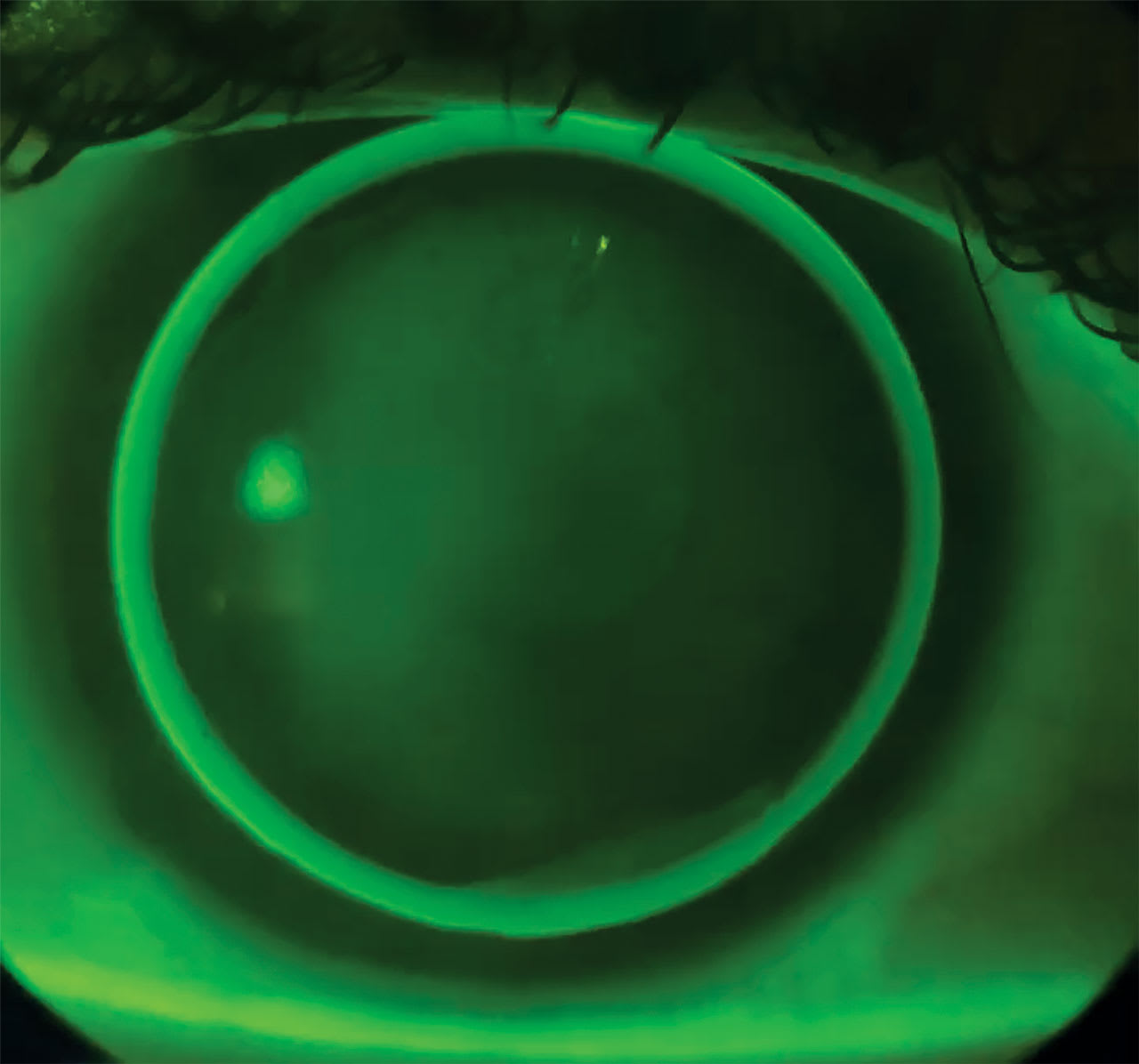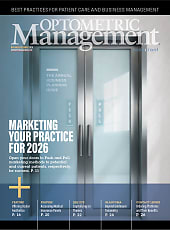CORNEAL GPs come in a variety of styles to suit the eye you wish to fit. If you don’t fit GPs frequently, it can be a challenge to remember which lens works best for each situation. When deciding which type is correct, first think about what back-surface shape will best fit the patient’s cornea, and then consider the optics you need to correct their vision.
Sphere: Our workhorse lens is the spherical corneal GP. As the name implies, it has a spherical (non-toric) surface on the front and back. This lens thus provides only spherical optics, but gives cylinder correction via the lacrimal lens.
The spherical base curve (BC) will best fit a prolate, low-toricity corneal shape, typically 2.00 DC or less corneal cylinder or an elevation difference between major meridians of less than 60 microns. Optically, it works best when the corneal (keratometry) and refractive cylinders are very close. Therefore, any mismatch will result in residual astigmatism.
Front-Surface Toric: This design is spherical on the back of the lens surface and toric on the front surface. It is used when a spherical BC will fit well, but there is excessive residual cylinder with spherical optics. Front-surface toricity is used to correct residual astigmatism. This lens often suffers from rotational instability, even with prism ballasting, potentially decreasing acuity.
Toric Base Curves: Bitoric and back-surface toric (BST) designs are used for higher amounts of regular corneal astigmatism, typically when the corneal cylinder is above 3.00 DC or the elevation difference is more than about 60 microns (Figure 1). The difference between the 2 designs lies in the optics, with bitoric lenses having cylinder on both sides.

In general, a lab can help determine which of these designs to use based on input on the base curves and powers needed for each meridian. Of note, vision is very stable with these lenses, even with rotation, unlike that achieved with soft toric lenses.
Aspheric: Aspheric BC lenses are most commonly used for borderline amounts of corneal toricity (between 2 DC and 3 DC), against-the-rule corneas, or highly prolate corneas (such as in keratoconus). The aspheric back surface enhances the capillary attraction of the lens, improving lens centration in these cases. The optics do not use toricity, although some designs allow for front-surface toricity when needed for residual astigmatism.
Reverse-Geometry: Reverse geometry lenses are most commonly used in orthokeratology, but the oblate shape of the design is also useful for oblate corneas, notably for myopic post-laser-assisted in situ keratomileusis, post-radial keratotomy, and post-graft corneas.
Lens Design Assistance: For sphere and toric lenses, a great fitting resource is the lens guide at gpli.info/lens-calculator. This tool allows you to input patient parameters and helps select the best design, calculates lens parameters, and explains how the chosen design works.
Of course, you can always depend on the fitting consultants at your GP laboratory, whose expertise can guide you through lens selection and design as well. Although scleral lenses continue to increase in popularity, there is still room for corneal GPs in your toolbox.



